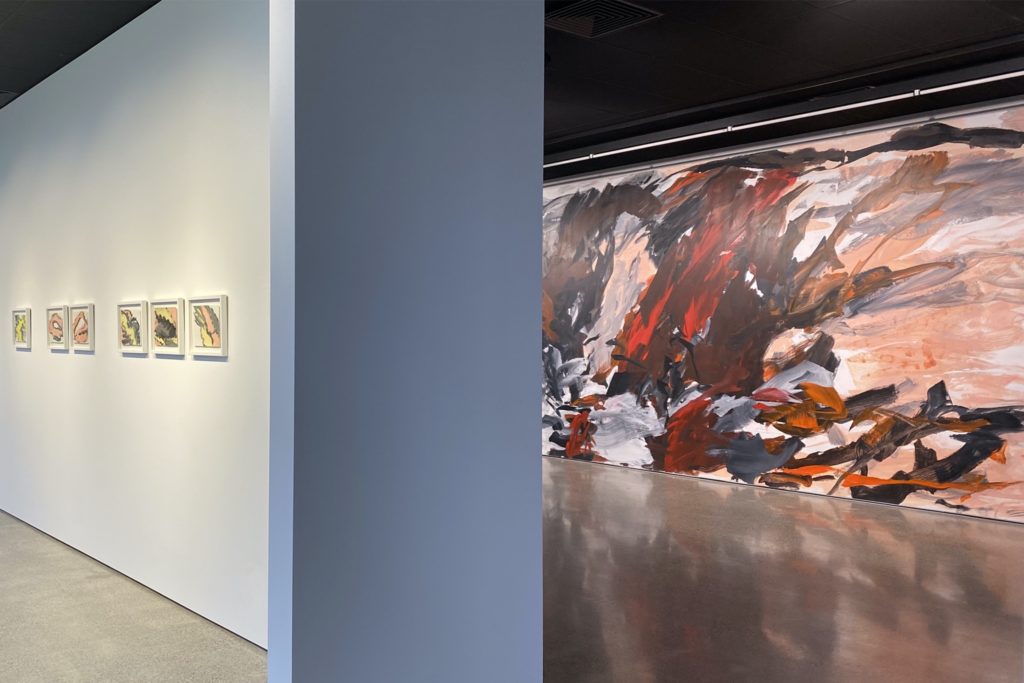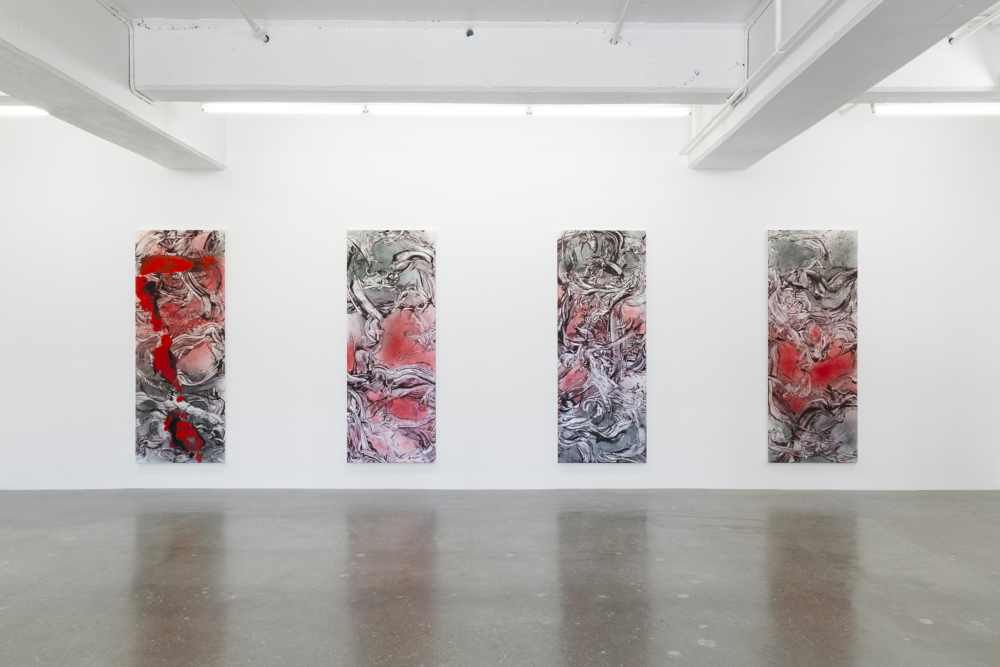
Cry Sea, Cry Sky Robert Heald Gallery, Wellington, Aotearoa/New Zealand
25 January – 24 February 2024
Here You Are, 9 March – 20 April 2024, Michael Lett Gallery, Auckland / Tamaki Makaurau, New Zealand

Cry Sea, Cry Sky Robert Heald Gallery, Wellington, Aotearoa/New Zealand
25 January – 24 February 2024
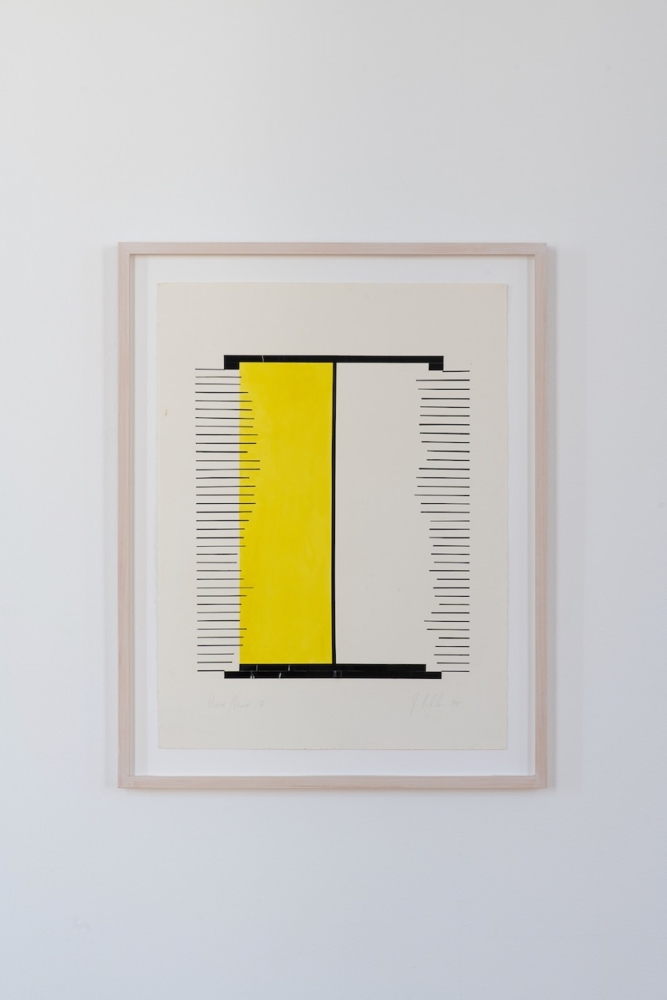
Spotlight, Kunstmuseum St Gallen, Switzerland: 25 November 2023- 24 March 2024
Spotlight focuses on the individual artists for whom Kunstmuseum St Gallen holds significant bodies of work: John M. Armleder, Candice Breitz, Silvie Defraoui, Georg Gatsas, Sharon Hayes, Sara Masüger, Judy Millar, and Carl Ostendarp.
Malerei – Galerie Mark Mueller, Zurich www.markmueller.ch
11 November – 23 December 2023
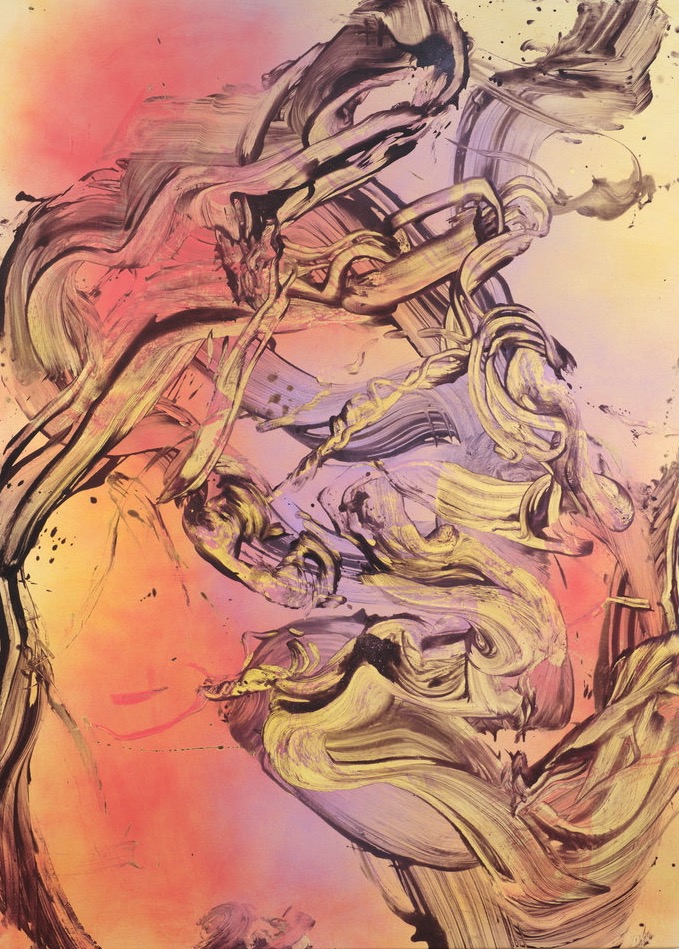
Questions I Have Asked Myself September 3 – November 15 2020
Galerie Mark Mueller, Zurich, Switzerland
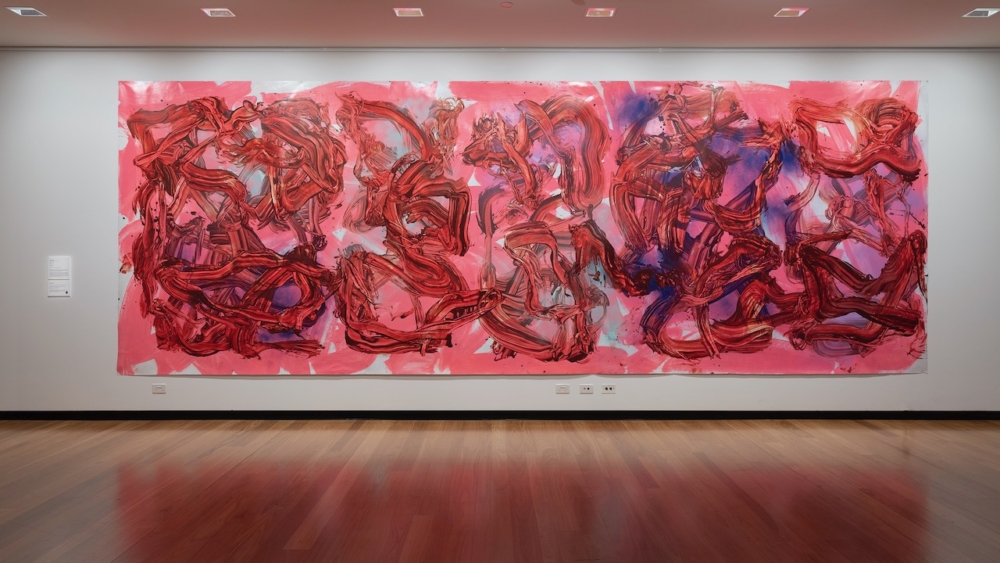
Double Hand 2020 acrylic on billboard vinyl 250 x 690cm included in Expanded Canvas – group exhibition Baroondara Town Hall Gallery, Melbourne, Australia 23 April – 2 July 2022
Whipped Up World. 27 January 2022 – 26 February 2022 Robert Heald Gallery, Wellington, New Zealand
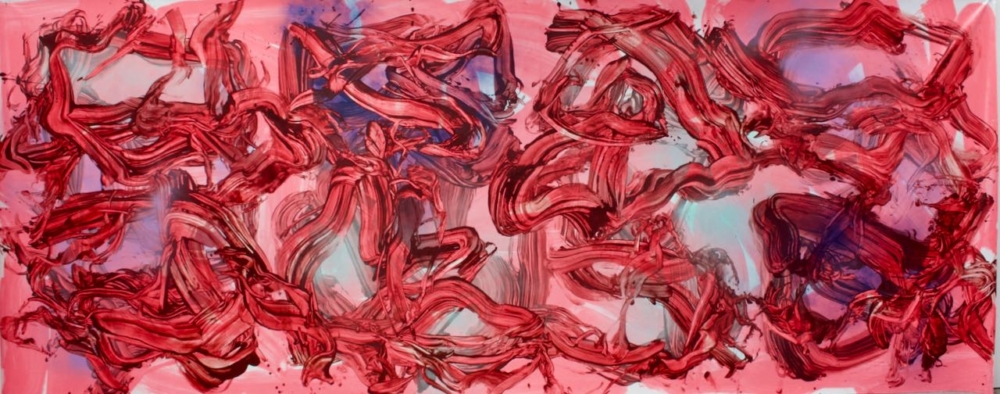
Gow Langsford Gallery and Tim Melville Gallery, Auckland, present 2 in 1: Judy Millar and Alberto Garcia Alvarez a two gallery exhibition curated by Stephen Bambury. 5 August – 29 August 2020. A catalogue will be published to accompany the exhibition.
Judy Millar
«Questions I have asked myself»
the visual limits
of now you see it
now you don’t
where is the edge of vision?[i]
In hardly any other field than the arts are our (human) limits of perception, consciousness, and comprehension so ceaselessly explored and challenged. It is the artistic search for those very liminal experiences which are able to transport us to different, previously unknown places — places of the in-between, places of the other, places of the “unthinkable”. Ultimately, artists seem to have always been driven by a desire to expand our horizons and “bring together things outside of normal classifications, and glean from these affinities a new kind of knowledge which opens our eyes to certain unperceived aspects of our world and to the unconscious of our vision.”[ii] In some cases, the artistic quest to find these places becomes a crucial part of the approach and of the work itself. They create specific spaces and places based on our shared reality, yet challenging and expanding it at the same time: simultaneously real and unreal spaces, spaces that overturn or transform the everyday – or in other words: heterotopias. The French philosopher and writer Michel Foucault outlines the notion of heterotopia to describe certain cultural, institutional and discursive spaces.[iii] According to Foucault, heterotopias can be “real places — places that do exist and that are formed in the very founding of society — which are something like counter-sites, a kind of effectively enacted utopia in which the real sites, all the other real sites that can be found within the culture, are simultaneously represented, contested, and inverted.”[iv] They are places and spaces that are in different ways separate worlds within our world, mirroring and yet distinguishing themselves from what is outside. What characterizes them is a separation from and a tension with the remaining quotidian space, but in the sense of correlations or resemblances. From this point of view, the work of Judy Millar is as much a heterotopic microcosm as it is a painterly counter-site. At Galerie Mark Müller, the New Zealand painter takes us to various intangible site of escape, containment, rest, pleasure and transformation by exploring our edge of vision.
every attempted annihilation of the image makes it richer
Six large-scale paintings from the past two years come together in the gallery’s main room. Shifting between soft pastel tones and rich violet, blue, and yellow hues, a connecting element is constituted by the ribbons and lines stretching searchingly across the surface of each painting. Like a snapshot of an endlessly moving shadow, the colors applied in part directly by hand bring the duality of Judy Millar’s artistic undertaking into focus: on the one hand, the acrylic and oil paints are clearly visible due to their tangible materiality, as is the canvas as a given and confined image carrier. The paint and its layering are thus traceable and sometimes even addressed in works such as Untitled – Paintover (2020). The paintings are clearly set within a material reality that neither conceals nor masks the fact that they are “made”. On the other hand, both color and canvas are a means to an end that allows the artist to enter a world of illusion, a second reality, in which she confronts us with the works’ incredible depth and irrepressible pull. The painterly gestures seem to reach beyond the edges of the canvas and take on a life of their own. At the same time, each gesture serves a careful attempt to question what is actually visible (and what is not), as Millar seeks to obscure, conceal, and annihilate. Color, too, has a dual function since it serves as both a medium and a mood of sorts. In this respect, the hues and nuances of color evoke an atmospheric or affective tipping point: on a temporal level, by recalling the moment of dusk or dawn for instance, as well as spatially, as an in-between space oscillating between material fact and elusive dream.
I am a painter except when I am painting, then I am no-one, no-where, nothing
The exhibition title is borrowed from the eponymous publication, which brings together Judy Millar’s key works from the past forty years as well as notes and drawings from her workbooks. The written excerpts and thoughts that she shares in this catalogue express the exceptional “push and pull” of her thinking and ideas. This tension is just as inherent in her paintings: they convey what is probably one of the most fundamental contradictions of humankind, since we both exist corporeally and inhabit a mental, fictitious world at the same time. It is precisely on this threshold between materiality and illusion, the known and the unknown, the familiar and the new, that Millar explores the visible and the invisible realms through her work. Her paintings are thus able to conjure a heterotopic counter-site or a placeless place, so to speak, that brings together two colliding realities. The artist herself might describe this place as “no-where”. But even nowhere is indeed somewhere.
Marlene Bürgi
[i] The following quotes are excerpts from the catalog published in 2021 entitled “Questions I Have Asked Myself” by Judy Millar, which not only gives its name to the exhibition at Galerie Mark Müller, but is an important point of reference.
[ii] Georges Didi-Huberman, Atlas: How to Carry the World on One’s Back, Exh.cat. Museo Nacional Centro de Arte Reina Sofia, 2010.
[iii] Although the concept of heterotopia is highly contested, some theorists have explored it, while acknowledging its incompleteness and lack of clarity. In this particular context, it serves as a possibility to converge two independent spheres – an actual site (the painting as such and its materiality) and a counter-site (the world of painterly illusion and fantasy) in order to become a namable entity. Michel Foucault writes and talks about heterotopias on three different occasions between 1966 and 1967. The most well-known explanation of the term is given in a lecture entitled “Des Espace Autres” in March 1967 to a group of architects. See Michel Foucault, “Of Other Spaces: Utopias and Heterotopias”, in: Architecture/Mouvement/Continuité, 1984.
[iv] Foucault 1984, 3. Moreover, Foucault describes a bewildering set of examples, including utopian communities, ships, cemeteries, brothels, museums, prisons, gardens of antiquity, fairs and many more.
‘Expanded Canvas’ is a major exhibition at Town Hall Gallery exploring the dynamic and innovative nature of contemporary painting.
The traditional grid and two-dimensional picture planes are replaced by modern surfaces, including drop sheets, sign vinyl, virtual space, and the gallery wall itself. Colour spills, splatters, pools and stretches through the gallery space, in artworks that challenge possibilities of scale, form, colour and gesture. Pigment and brushwork are combined with elements from design, sculpture, animation and textiles to create vibrant and unexpected three-dimensional, virtual and ephemeral artworks.
‘Expanded Canvas’ showcases the ideas and aesthetics that characterise painting practice today, including artworks that reveal the continually evolving nature of the medium when fused with other disciplines and materials.
Featuring: David Harley, Lara Merrett, Judy Millar, Tom Polo, Bundit Puangthong and Huseyin Sami.
Whipped Up World – Review Mark Amery – Stuff 19 February 2022
The title of Millar’s show at Robert Heald Gallery, upstairs in Cuba Street’s Left Bank, speaks straight to my sense of the state of things this week: Whipped up World. At their best, Millar’s large expressive gestural paintings have an extraordinary ability to express a physical and metaphysical experience of space and time, as if unlocking a different dimension.
There are two distinct sets of work here, demonstrating different pulls in Millar’s work. In the first room is the more familiar: a dominance of lithe yet muscular movement of whipping wiped strokes, twisting in and out of deep space. Millar’s abstract work has a highly evolved natural engine of its own. These strokes are at once moving skeletal body parts, sparking twisting electrical synapses, and DNA strands crackling in construction, all set within a rainbow bath of exquisite colour to be found where the ocean meets sky at dusk and dawn.
In the second room, on bigger canvases, the works are denser, with tension and obscuration caused by thick bright slaps of paint, congealed on the surface over deeper stormier pools. There’s nothing calming here – it’s big weather conflict, as if human and nature are in struggle, and the artist meditating through action – as one title puts it – on a ‘’Doubtful Sea’’. I’m put in mind of Millar as a gardener. I find these works harder to resolve as an experience, but there’s something rewarding in the almost physical struggle they put me through.
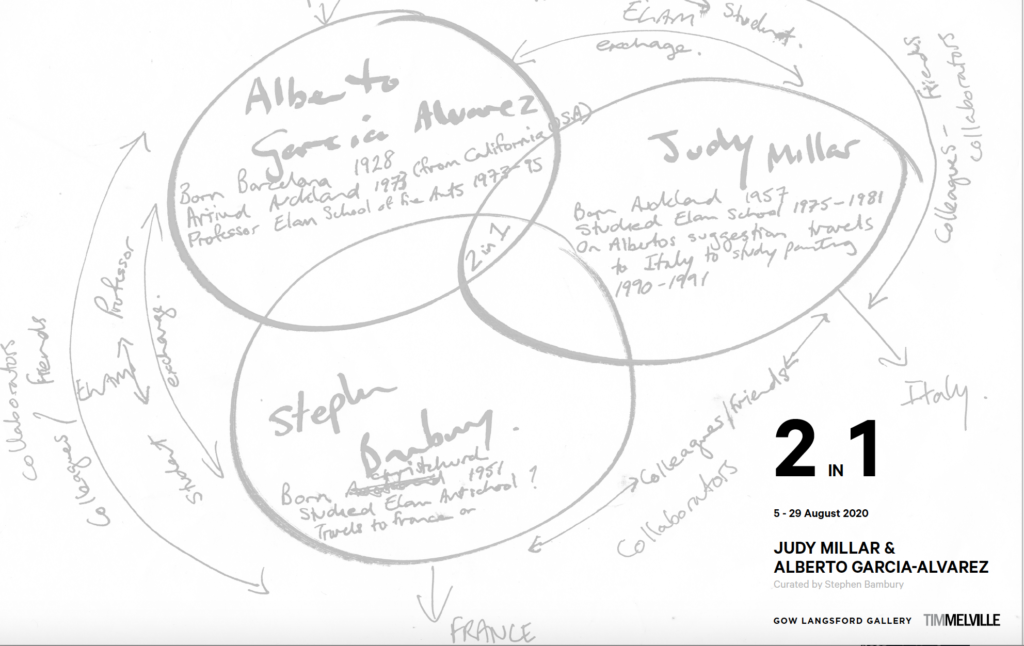
In 1972 Alberto Garcia Alvarez arrived in Auckland from California having been invited here as a guest lecturer at the University of Auckland’s Elam School of Fine Arts. Alberto went on to become a Senior Lecturer at Elam, retiring from the position in 1995.
During his tenure at Auckland University Alberto was an influential teacher. He was sought out by students who were drawn to both his knowledge of international contemporary painting and his deeply curious and enquiring personality.
Judy Millar and Stephen Bambury were two students who found a kinship with Alberto’s relentlessly questioning mind. Both came to regard him as a crucial figure in their own independent artistic developments.
This exhibition featuring the work of Alberto Garcia Alvarez and Judy Millar has been curated by Stephen Bambury and so brings the three together in a public dialogue for the first time.
The exhibition will focus on two distinct periods of Garcia Alvarez’ and Millar’s work. Paintings produced by Garcia Alvarez during his time in California in the late 1960’s have been selected by Bambury to sit alongside paintings painted during the last few years in his Auckland studio. Millar will exhibit work from 1981 when she was a student at Elam together with a number of recent paintings.
The exhibition will be held contemporaneously across both Gow Langsford Gallery, Kitchener St, Central Auckland and Tim Melville Gallery, Winchester St, Newton, between August 4th to August 25th 2020.
A catalogue will accompany the exhibition containing previously unpublished writings by both Garcia Alvarez and Millar.

In 1971 an exhibition of 10 Big Paintings opened at the Auckland Art Gallery. All the exhibited artists were men. 50 years later Millar has painted the eleventh work for that exhibition.
The work was painted during the last months of 2019 as Millar felt urgency in the air and rolled out the largest canvas she could across her studio floor and got to work.
The situation of our current times as Covid-19 creates havoc and heartache across the planet is beyond anything she could have imagined.
